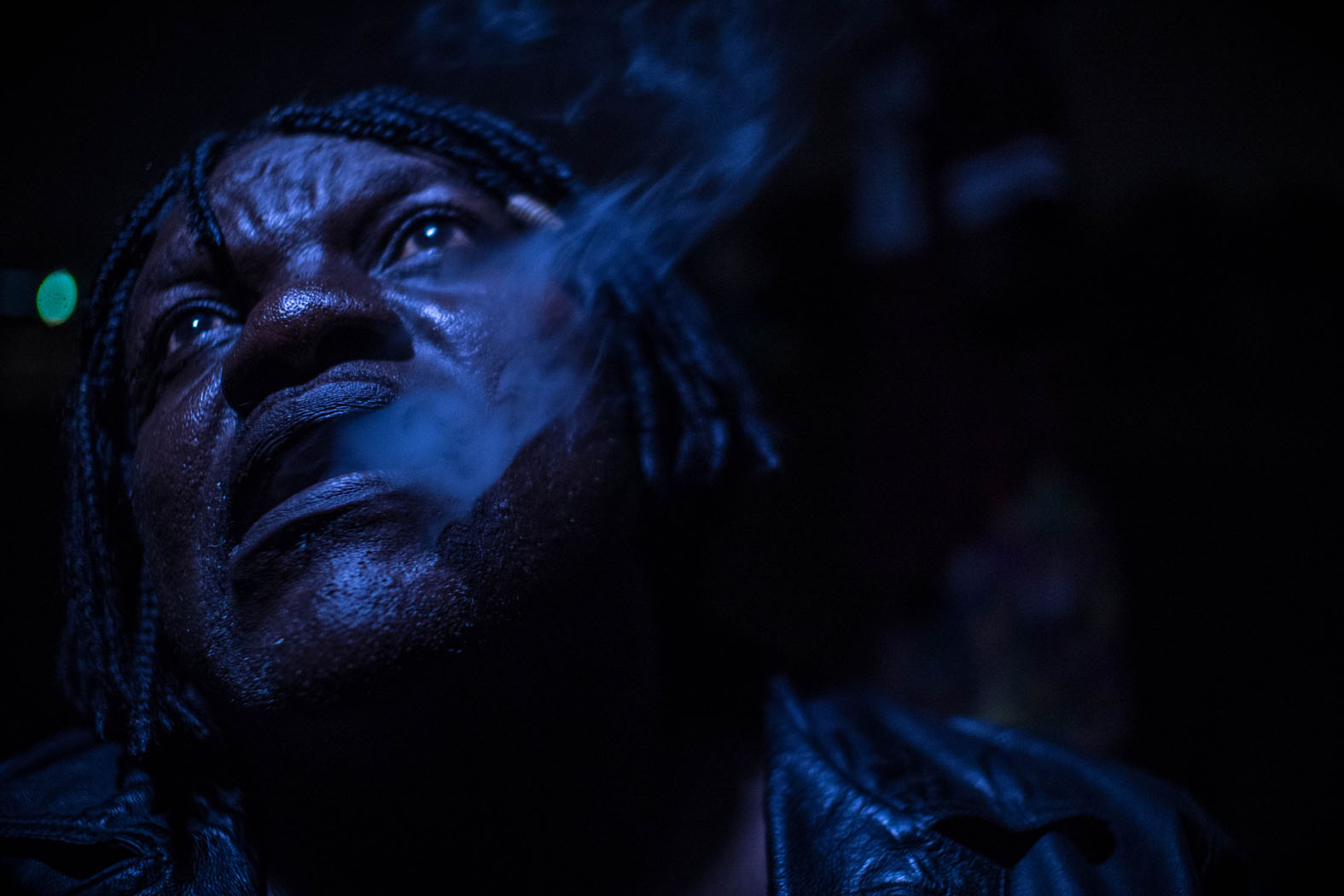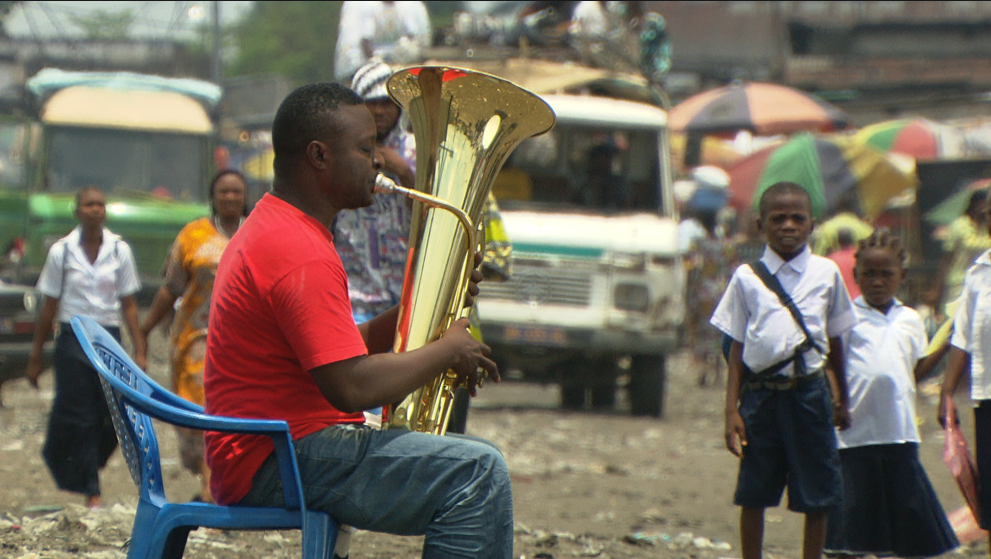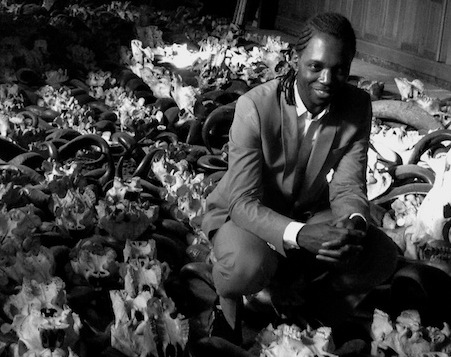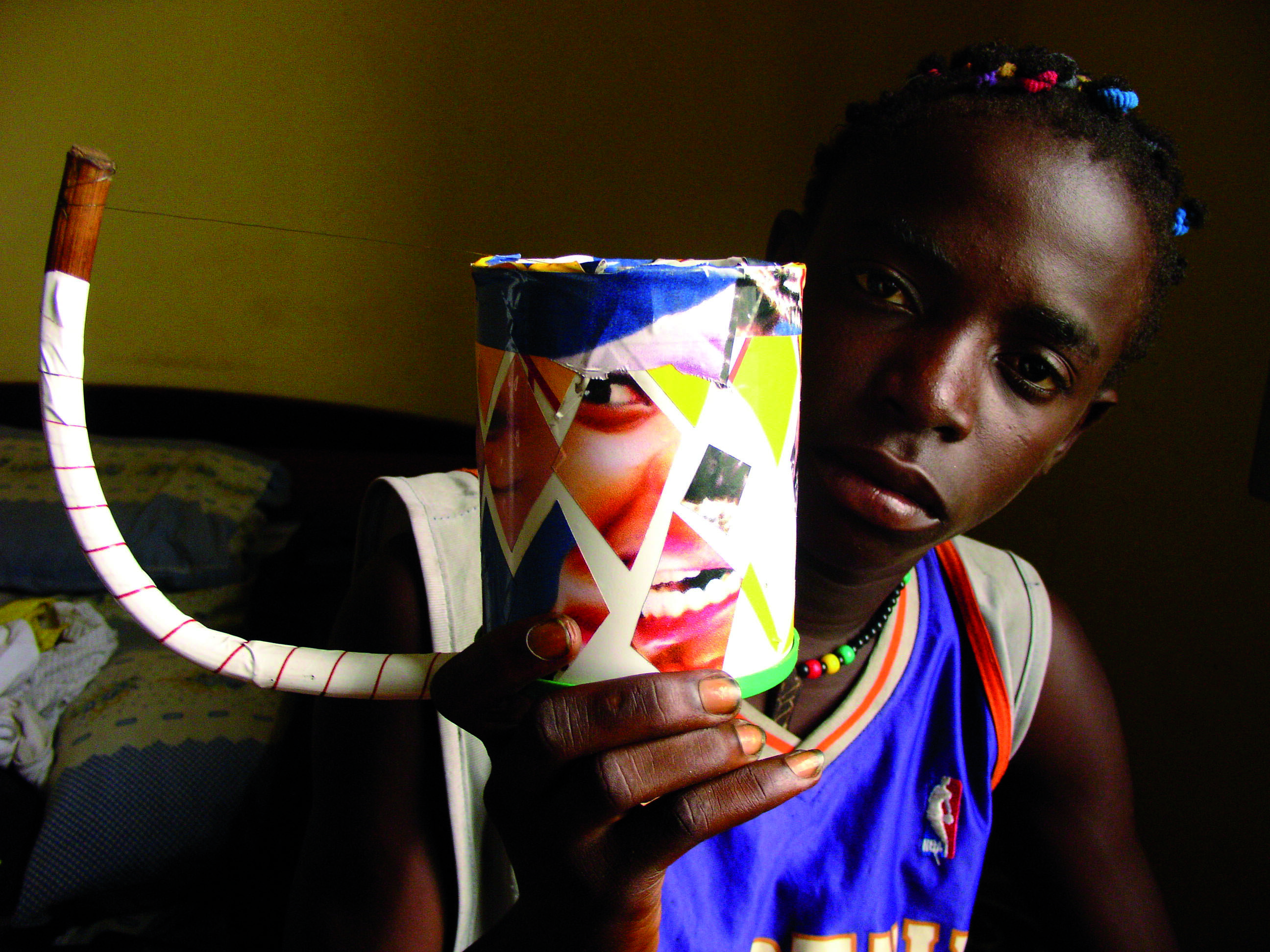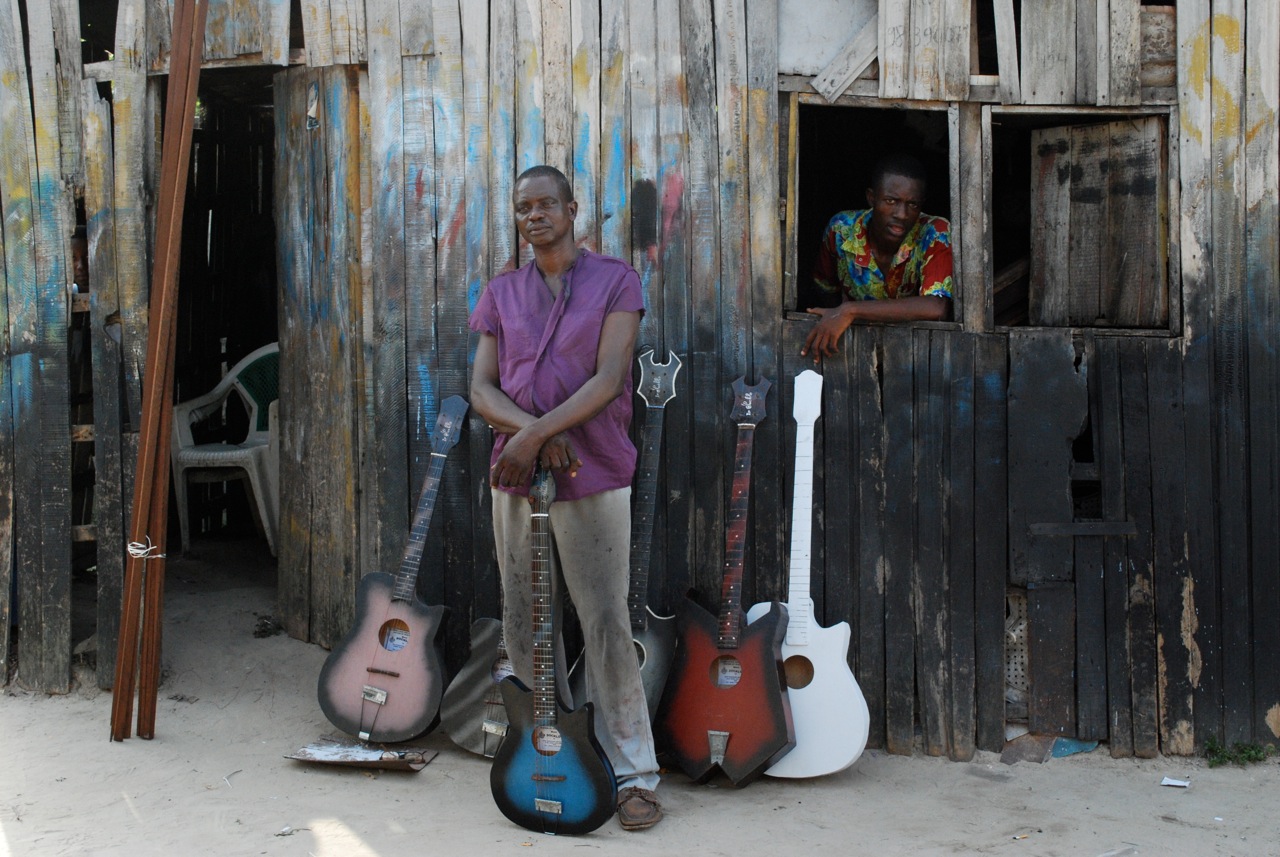If you type ‘Little Mogadishu’ into Google, you get an instant overview of an exploded people with Somali communities implanted like shards into the poorer parts of cities all over Europe and North America. Refine your search to ‘Little Mogadishu + Toronto’ and you’re transported to the high-rise grime of Dixon Road, between Kipling and Islington Avenues, with its halal butchers, exotic groceries and underground khat dens run by refugees from Hargeisa, Kismayo, Baidoa and Mogadishu. It’s a ‘hood that keeps local law enforcement and social services busy whilst feeding the distant boasts of politicians and city fathers who prefer to airbrush the daily grind of their struggling immigrant populations into a happier vision of Toronto as one of the most successful multi-cultural conurbations in the world. It’s also home to the largest population of Somalis outside Somalia itself.
Back in the early 90s, K’naan (‘The Traveller’) Warsame made the painful journey of exile with his mother from Mogadishu via Harlem, New York, to Dixon, Toronto, at the supposedly tender age of 12. The fact is that tenderness and innocence had already been all but garrotted from his life, outwardly at least, by the experience of growing up in the crossfire of Somalia’s brutal clan wars. His close encounters with hand-grenades, trigger-happy militiamen, prison and death have already been well recounted in the countless interviews that Africa’s brightest young hip-hop star has given since the release of his blisteringly candid and original debut CD ‘The Dusty Foot Philosopher’ in 2005. These experiences alone would have been enough to feed the mind of any talented street poet for a whole lifetime, but K’naan is the child of a globalised not a localised world, and his music is unique and fascinating because it articulates the confrontation between the contrasting brutalities, philosophies, poetries and lifestyles of Africa and North America. To fully understand him you need to consider both Mogadishu and Little Mogadishu.
“Dixon is world famous now,” K’naan tells me in a tired gentle voice over the phone from his hotel room in Berlin, where’s he’s concluding a heavy-weight promotional tour of Europe to support the release of his new live album ‘The Dusty Foot On The Road’. “It’s still all Somali. Growing up there, all my friends were survivors and we all loved hip-hop because it was the only thing that spoke to us. But the ghetto story that we were hearing couldn’t speak to the magnitude of the struggle that we had experienced back in Somalia. We would all snicker and laugh whenever we heard (puts on an exaggerated homey ghetto voice): “In my neighbourhood, you know, I see somebody get killed one day!” And we were just like “Man, somebody just gotta say something. This is ridiculous.” So my friends would look at me and be like, “Man, you pretty good at this stuff. Why don’t you say something.”
This battle for recognition in the hierarchy of the hard is the subject of one of K’naan’s best loved tunes, ‘What’s Hardcore’, with its immortal line “If I rhymed about home and got descriptive / I’d make Fifty Cent look like Limp Bizkit.”’ But what might seem like ghetto-boy posturing was actually part of a deeper struggle to gain respect. “In Dixon we’d have many clashes with gangs from other neighbourhoods and different parts of the world,” explains K’naan. “We were relentless in our pursuit of being respected and having dignity. We kind of redefined our reputation and reintroduced the idea that Somalis weren’t necessarily people that you could push around. Dixon was the neighbourhood that this sentiment came out of, and it’s also where my music came from, so…”
In inner-city ghettos like Dixon, respect is a protective shield, and so the desire of K’naan and his fellow travellers to earn that shield by pointing out that local struggles amounted to nothing more than a picnic on a sunny day compared to life in K’naan’s native Wardhiigleey (‘River Of Blood’) district of Mogadishu is understandable. But when the time came to take his music to the world, K’naan felt frustrated with the inevitable drooling focus of the western media on all the ‘exotic’ real-life stories of bullets and blood that peppered his repertoire.
“I made music initially in order to get over the past, and to deal with some of the pain by transforming it, sort of like pottery, and shaping it into beautiful melodic music. Later, when the whole press and interview thing came along, the titles were like (said with mock eagerness): K’NAAN SHOULD HAVE DIED A LONG TIME AGO…ha ha. Why??!! How come they’re killing me all the time? It was like this insane sensational thing going on. And culturally we don’t believe in that. If I’m so much better for surviving then what about my friends who did not survive. How do I console that? Were they not good enough humans or something? And I was always saying, look, if you want to speak about Somalia and war, you have to speak about the poetry, and the beauty and the ocean as well.”
So by winning the ghetto war and gaining the respect not only of his neighbours but also, eventually, of the wider North American rap community, K’naan inadvertently set up another struggle, to establish himself as a bard of beauty and soul as well as war and death, which he now pursues with characteristic eloquence. When I ask him if he reckons he might even outgrow hip-hop and adopt another vehicle for his poetry, the question reveals an uncertain future.
“That’s what I don’t know,” he says with sigh. “And I’m not saying that for drama. Hip-hop was urgent for me, especially when I needed that verbal barrage to explain these scenarios which I couldn’t otherwise. And that need is still part of me. But I also love other things that I do now, more in the vein of Fela meets Dylan, or something. I feel that’s as natural for me as hip hop.”
Whatever musical direction K’naan eventually takes, his verbal skill seems certain to remain his most impressive and bankable asset. Whether in his lyrical flow, or in his interviews, K’naan wields his adopted language with the deft ease of a master troubadour or a laureate philosopher and it’s this talent that sets him apart from many of the more mundane ghetto rhymers. Songs like “My Old Home” paint his lost homeland with novelistic depth and accuracy.
There could be something pre-ordained about this talent for words, however, if you consider Somalia’s deep historical attachment to poetry. “The country teems with poets,” wrote explorer Richard Burton who spent six months in the Horn of Africa in 1854. In what was essentially a nomadic culture, where an abundance of material possessions was only an encumbrance to mobility, poems were the gemstones of family, clan and tribe. K’Naan, whose grandfather was the gifted poet Haji Mohammed, and whose aunt Magool was one of Somalia’s most famous singers in the 1970s and 80s, recognises the debt he owes to traditional Somali poetry, with its treasury of proverbs and sparkling imagery. “When I sing certain phrases like “my own home smells of good birth” and things like this, they owe a lot to the traditional poetry. Like, when a birth is successful the feeling of it is a sense. It’s very proverbial, and very connected to that old way of seeing things. And naturally, not always consciously, that world comes out in my lyrics but it comes out in a way that is kind of now, kind of current. And so it feels both old and new.”
Thanks perhaps to his millennial poetic heritage, K’naan attributes a power to poetry that goes far beyond any base desire simply to outshine his rival rhymers. “The articulate have a home,” he explains. “A shelter from the storm. Back in Somalia, we dwell in this beautiful Shakespearean African kind of world. And when you’re completely snatched from it by violence and migration it’s like you’re skinless in this world, and really feel like you’ve left your home.”
A few years ago, K’naan took a year off to read books, holing himself up in a cabin far from the noise of the city and the distractions of the telephone and television. He devoured tomes by modern cultural theorists and linguists like Ngugi wa Thiongo, Eduardo Galliano and Neil Postman, and novels by afro-American authors like Toni Morrison. “It was kind of like an important developmental stage for me,” he remembers.
I ask him whether this dive into deep intellectual waters inadvertently distanced him from the ‘innocent’ wisdom of the street, of the dusty-foot philosopher in tattered trousers and faded shirt running about the dirt-roads of Africa, who K’Naan praises like a kind of alter ego. “Yes, I understand what you’re saying,” he answers. “But the innocence kind of weaves itself into a sense of values, informed by the street and by underprivileged philosophy, and perhaps that is no longer my entire point of reference but it has become interweaved with my value system.”
Yet the bonds which tie K’naan to his troubled home remain visceral and unbroken. Asked whether he would go back if the situation improved and he replies “Instantly.” He rails against the years of ham-fisted foreign intervention that only served to fuel the arrogance and firepower of Somalia’s clan lords and expresses qualified praise for the Islamic Courts Union who last year managed to open a small window of peace after 17 years of bloodshed. “It was an amazing accomplishment.” K’naan asserts, “They managed to do what the international community had failed to do for 17 years. I’m not necessarily a supporter of Islamic groups, but I’m a supporter of anyone who is able for a second to stop the pillaging and the rape.”
At this year’s Glastonbury festival, K’naan took part in the Africa Express extravaganza on the Park Stage on Saturday night, alongside a host of fellow African music luminaries including Amadou & Mariam, Rachid Taha, Baaba Maal, Toumani Diabate and Tinariwen who were invited to share the platform, on an equal footing, with the likes of Damon Albarn, Fat Boy Slim, The Magic Numbers, Billy Bragg and Hard-Fi. It was an unforgettable evening, hailed by Emily Eavis no less as “one of the best things I’ve seen at Glastonbury in the past 10 years.”
The evening highlighted one of the dilemmas facing artists like K’naan, who sometimes find themselves classified as ‘world music’ with all the baggage of ghettoisation, stylistic confusion and philosophical prejudice that the term can carry with it. K’naan’s sorely noted absence at this year’s BBC Radio 3 Awards for World Music poll-winners concert at the Barbican in London was received in some quarters like a declaration of defiance, a terse cry of “I am who I am!” even though the man himself clearly explained that his no-show was entirely due to the birth of his first child. But what does he think needs to happen before the immense musical talent and potential in modern-day Africa can be accepted in Europe, North America and other parts of the world on an equal footing with the pop, rock, urban mainstream.
“I suppose that question is more for the manufacturers of cool culture,” he says. “That’s kind of where there needs to be a redefinition. Because a lot of cool young culture has no connection to the sources of things, the origins of thing. They don’t know about it and anything outside of the Eurocentric languages is already ruled out. To change that you would readjust the system of cool so that it’s not stuck in this situation where either it’s the poor in Africa who understand it or it’s the privileged in the west that have the leisure to go and check it out. It needs to be in the streets here as it’s in the streets in Africa. You need something like an American hip hop street star connecting with an African artist in a real sense, not in the manufactured sense that these record labels often deal with, to actually introduce these artists to how the mother of all streets survives, to the things that we deal with, to our street language, and to the flame that is in our hip hop over there. If you did projects that connect street to street, rather than street to privilege, then you would break a new cultural barrier, and have new ground to work on.”
Street to street, Wardhiigleey to Dixon, it sounds like K’naan’s already out there rhyming, philosophizing, breaking new ground.
Andy Morgan. (c) 2007
First published in The Independent – July 2007


